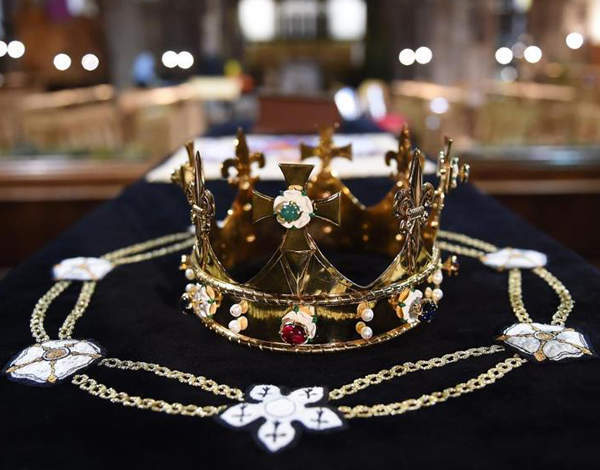

The Spear’s 500 2016 edition is now under way. It has swiftly become Europe’s definitive guide to the top advisers, lawyers and wealth managers for HNW individuals. Launched at the Savoy at the Spear’s Wealth Management Awards last October, the first Spear’s 500 identified the top 500 individuals across the entire spectrum of wealth management and private-client practice in the UK, from private banking to philanthropy, family offices to family lawyers. We also featured the top HNW service companies from property finders to art advisers. ‘If you’re rich enough… these are the top guns for hire,’ declared the Evening Standard on the day we launched.
We have now expanded the Spear’s Research Unit, who will be continuing to identify the very top professionals (typically only the top 25 or 50 in each field) working in the UK’s wealth management world. By being so discriminating, our guide is a unique tool for HNWs wanting to select the very best advisers.
This year, the guide will be distributed to many more HNWs; copies will be sent out with the October issue of Spear’s to the private homes or offices of all those on the Spear’s Ultra Rich List — in addition to those being distributed through BA First Class cabins and lounges. The 2016 edition will have a more rigorous methodology, more client referrals, more in-house intelligence gathering and — following feedback from our HNW readers — a number of new categories to make the guide even more comprehensive. These will include London Global Banking, UK Regions (law and asset management) and the Channel Islands (asset management, MFOs, lawyers and tax advisory).
We are also adding UK business schools, as enrolling in a leading business school — such as the Saïd Business School in Oxford — is becoming an increasingly common career move for wealth management professionals wanting to take a sabbatical from their Mayfair or Canary Wharf offices to broaden their management experience.
Such business schools are also discreetly popular with scions of wealthy families who either want to carve out their own business paths or bring a fresh perspective to the existing family business. I know there is certainly demand as — following the 2008 crisis — one former hedge-fund manager friend of mine enrolled in the London School of Economics after losing his job — and his firm losing many of their HNW clients. Indeed, he used to enjoy telling friends how he had swapped his Addison Lee account for an Oyster card that he now used on the bus. His clients might have hoped he had attended the LSE before becoming a Master of the Universe, but he was certainly not alone in opting for an economics education post the financial crisis.
From The Spear’s 500 to August 1485. I was delighted that Spear’s had a ringside seat inside Leicester Cathedral for the Sunday afternoon service for Richard III in March. It was a bizarre but sublime day.
After Spear’s cover artist Adam Dant and I had attended the morning service to mark ‘the departure of the mortal remains’ of Richard III at the Leicester University campus, we found ourselves on the M69 travelling at speed behind the hearse — en route to the Bosworth battlefield. While walking solemnly behind the oak casket of Richard III had seemed strange but not surreal, driving along at 70mph behind a coffin containing the bones of the last English king to die in battle was truly peculiar. Then it was on to the cathedral.
It was all a reminder — to me at least — of how our greatest national asset is our unique history. Adam — who had
just been appointed by the government as the nation’s official general election artist — admitted the day was unusual: ‘It’s not every day that you get invited to bring your sketchbook to the reburial of the last Plantagenet king.’
For the reburial itself, I was allocated a less historic perch, inside the White Rose cathedral tearoom. I liked the unscripted moment after the service when I witnessed an assistant to the Archbishop of Canterbury using a dustpan and brush to sweep up some soil that was lying on the new stone floor around the coffin. Only this was not any old English soil. As Richard’s coffin was lowered into the grave in his new royal chapel, the archbishop had sprinkled soil from Fotheringhay Castle (where Richard was born), Middleham Castle (where he met his wife) and the battlefield of Bosworth itself. As he did so, the archbishop said: ‘From the earth you formed me, with flesh you clothed me.’
The Richard III tomb will become one of Britain’s greatest tourist attractions, finally putting the home town of Thomas Cook back on the map after being very much in decline for the last quarter of a century. By embracing its 1,000-year heritage, Leicester will now be able to reinvent itself both economically and culturally. Likewise, it should be noted that a special debt is owed to old-fashioned academia. The bones of Richard III were only discovered because Leicester has such a strong archaeological team.
It’s not often that academics are the stars of a global circus, but seeing them filing out of the cathedral beside the royal dignitaries reminded me that it was the spirit of empirical scholastic questioning, the voice that is brave enough to ask, ‘What if?’ when the odds are hopelessly stacked against you, that was the real victor ludorum of the Plantagenet funeral games that took place in Leicester.






